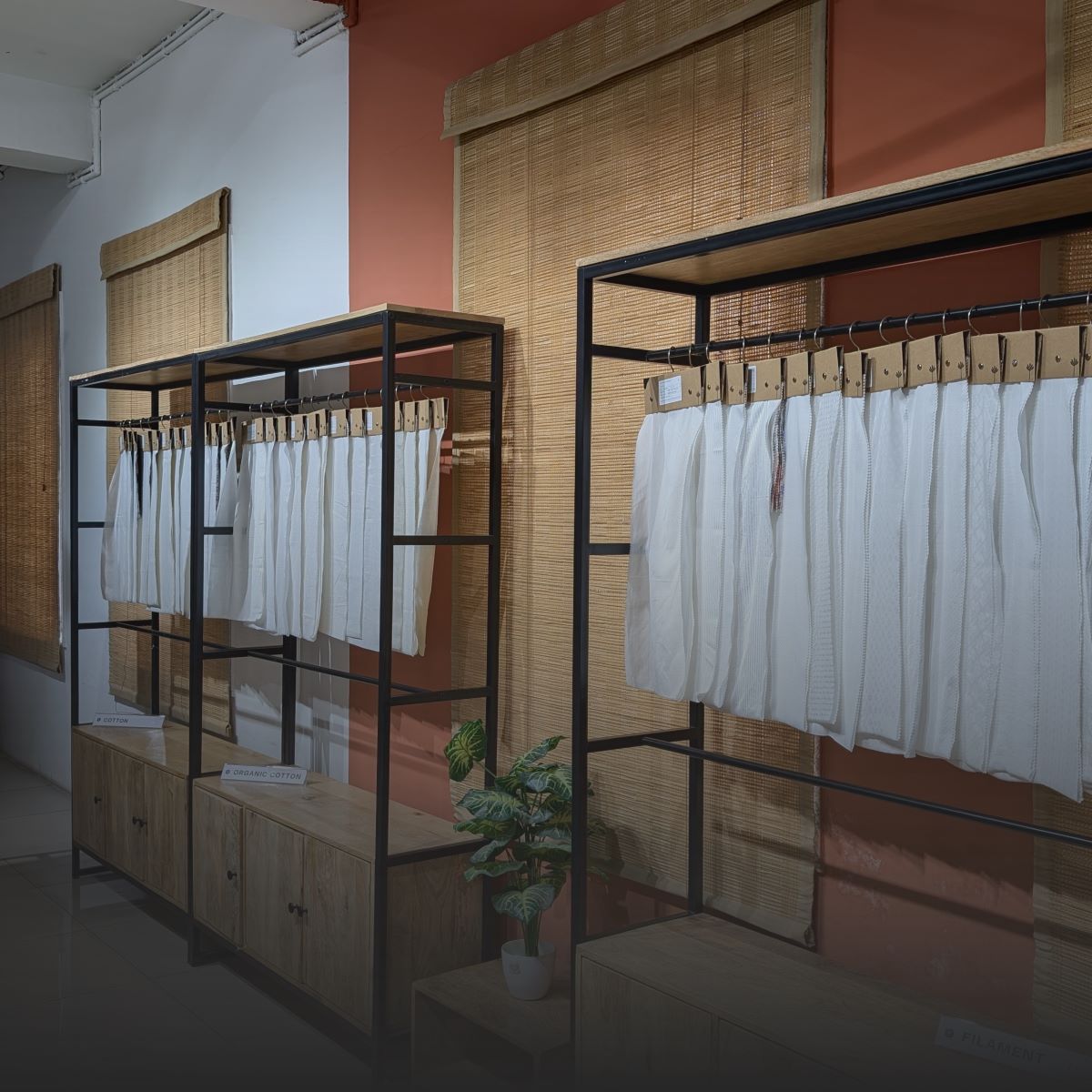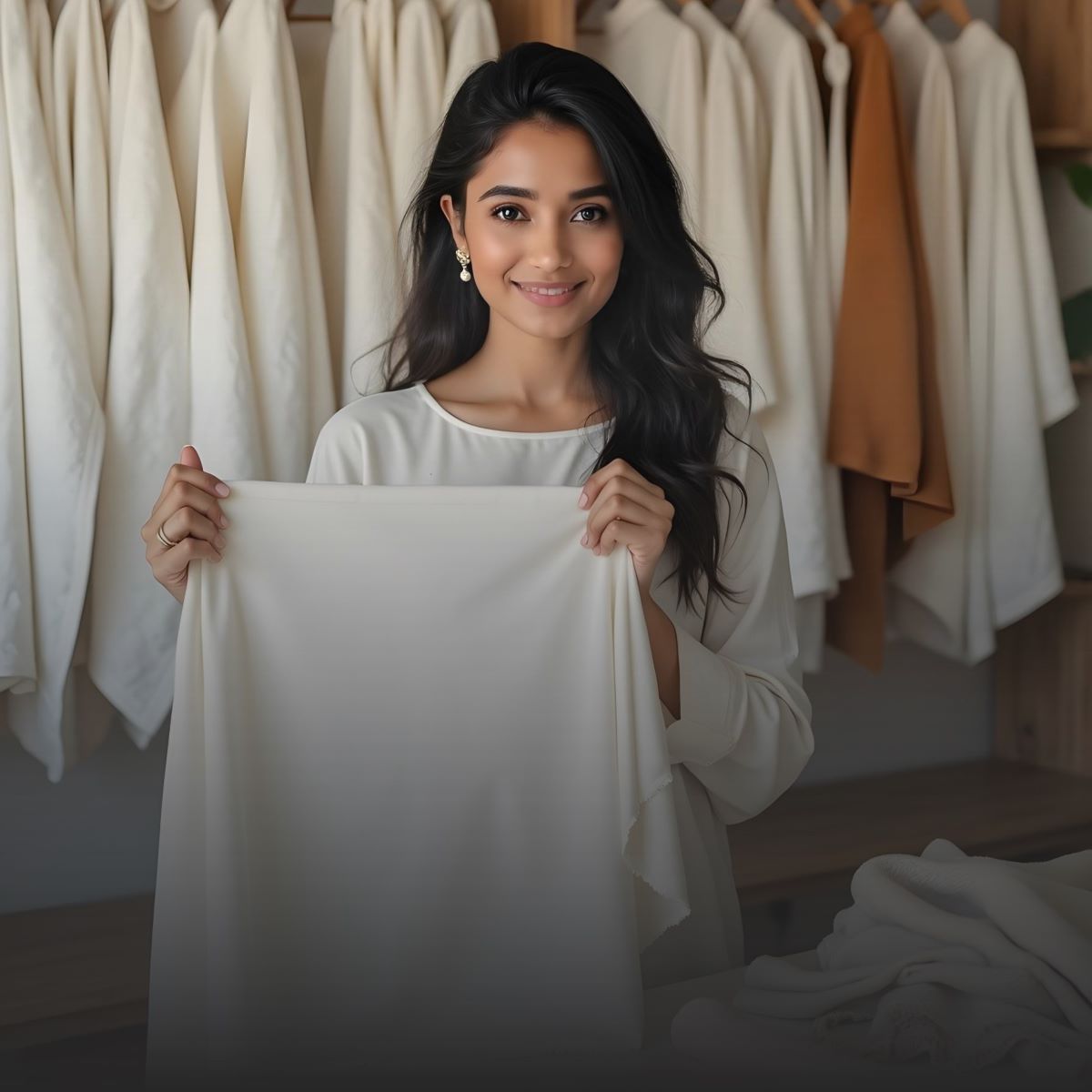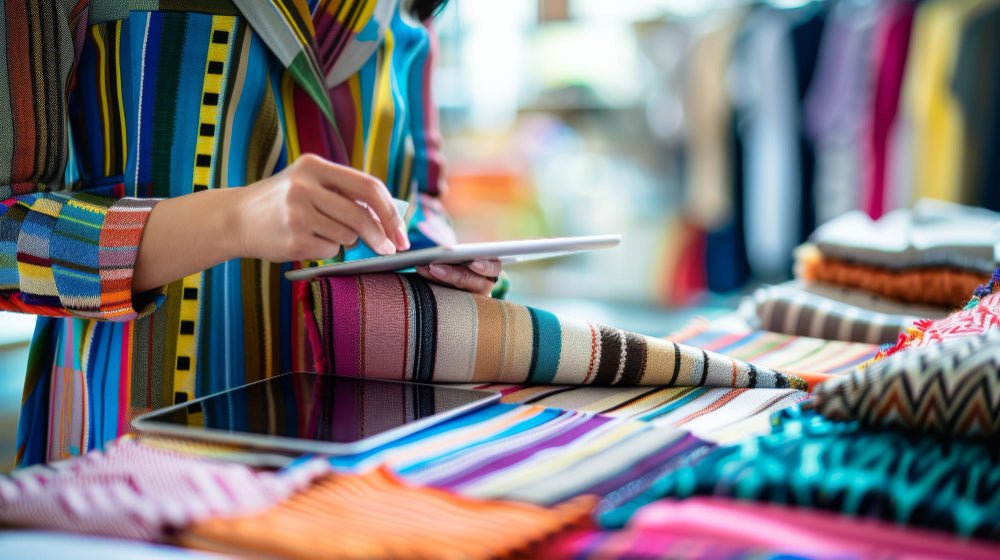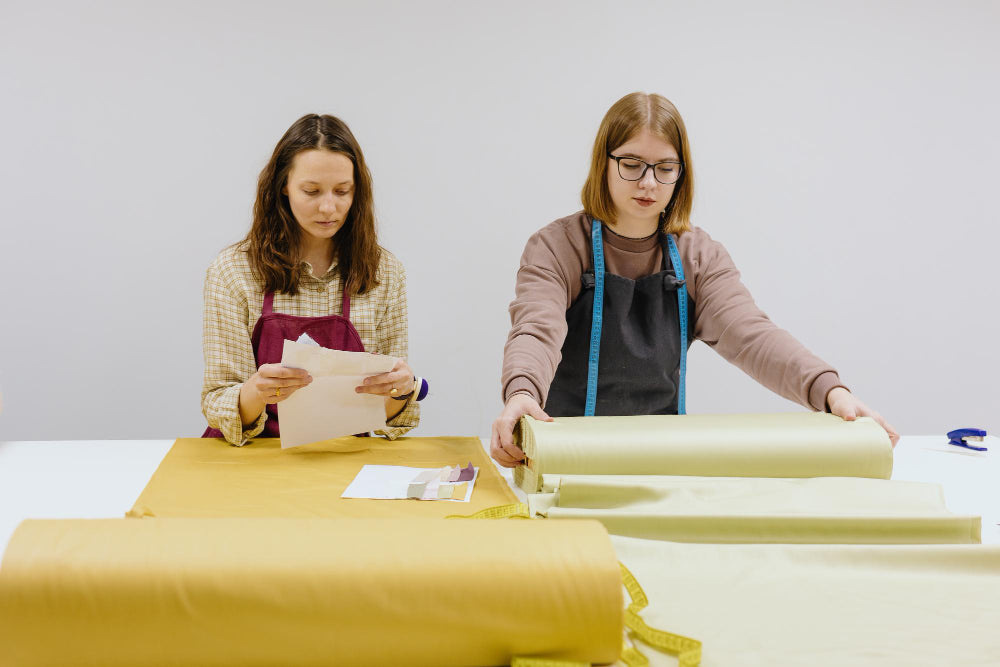When a fabric order arrives and the texture feels off or the color looks slightly different in daylight, it is already too late. At that point, production halts, corrections cost time and reputations are at risk.
These situations are not rare. They happen when material checks are skipped or handled casually. That is where inspection and testing services come in. They do not exist to slow you down. They exist to make sure your next step is safe to take.
Many fabric buyers face the same problem. They want quality assurance but are not sure where to go for it. Some hear about lab testing but do not know which labs are credible. Others work with suppliers but do not know if the inspection process is thorough.
This article brings clarity. You will learn who actually provides inspection and testing services for fabrics. You will also see when these services are useful, what kinds of tests are common and how to choose the right partner for quality assurance.
Everything here connects back to the real-world challenges businesses face. No assumptions. No filler. Only what helps you make the right decision.
What Is Fabric Inspection and Fabric Testing?
Once fabric arrives at your workshop or warehouse, your options become limited. If there is a problem, you either adjust your plans or absorb the loss. Inspection and testing help you avoid reaching that point.
Inspection begins with the basics, and it involves a close check of the fabric to catch visible flaws. These might include loose threads, uneven dyeing, slubs, stains or pattern misalignment. Most inspections follow a roll-by-roll process using fixed-point systems. The goal is to flag defects early, not after production starts.
Testing gives you a different kind of information. It tells you how the fabric performs under pressure. A lab can measure how much the fabric shrinks when washed, how well it holds color, how strong the fibers are and how it reacts to chemicals or moisture. This step is especially important if the fabric is intended for garments, exports or high-use products.
Both processes serve a single purpose. They help you understand what you are working with—before it is too late to make changes. Inspection answers what you can see. Testing answers what you can not.
Many people think these checks are meant for large-scale operations. In practice, small businesses, design studios and independent labels all face the same risks. And all benefit from catching quality issues before fabric goes into production.
Now that the methods are clear, the next step is to look at timing. When do you need testing or inspection? And why does that decision matter?
When and Why Are Fabric Testing Services Required?

Inspection and testing are not reserved for rare cases. They become necessary whenever fabric quality affects the outcome of your work. That includes creative projects, large production runs, export orders or anything with customer expectations attached.
You might need these services in the following situations:
- When sourcing fabric in bulk from new or unverified suppliers
- Before starting mass production of garments or home textiles
- When fulfilling export orders that require compliance with standards
- To confirm material performance during product development
- When dealing with complaints or quality issues in past batches
- If the fabric is intended for children, sensitive skin or regulated markets
Each of these moments brings risk. Testing and inspection help you manage it. They allow you to make informed decisions instead of reactive ones. And they support better planning, smoother production and stronger outcomes.
Common Types of Fabric Testing Services
A fabric might seem fine at first, but appearance alone does not confirm its performance. Some issues start to show only after the fabric is used, washed or handled during production. Testing helps avoid these situations. It provides reliable information before important choices are made.
Each test focuses on one property. The results help you understand if a fabric can meet your specific needs.
- GSM (Grams per Square Meter)
Measures fabric weight across a standard area. This supports fabric selection based on structure and consistency.
- Shrinkage Test
Shows how the fabric reacts to washing or steam. Results help maintain accuracy in sizing, cutting and stitching.
- Color Fastness Test
Evaluates how well the fabric retains its color when exposed to water, light or rubbing. This protects product appearance during use.
- Tensile Strength Test
Check the amount of pressure a fabric can handle before it tears. This matters in garments, upholstery and utility products.
- Chemical Testing
Identifies restricted substances in the fabric. These tests support safety compliance across different markets.
- pH Value Test
Assesses the fabric’s chemical balance. Extreme values may lead to skin discomfort after regular contact.
These tests reduce guesswork, and they help confirm what a fabric can handle before production moves forward. The next step is understanding who offers these services and how to find the right provider.
Who Provides Inspection and Testing Services for Fabric Quality Assurance?

Once you understand what to test, the next step is knowing who can perform the work with accuracy. Without a reliable provider, even the best testing methods can fall short.
Fabric inspection and testing services are usually offered by a few types of professionals. Each works in a different way depending on how fabric is sourced, handled or prepared for production.
- Independent testing laboratories
These are third-party service providers that operate without direct links to suppliers or mills. Many are certified and follow recognized testing standards. Their reports are used in domestic markets and required for global exports. Some offer general testing, while others focus on specific fabric types or regulations.
- In-house quality control units
Some fabric mills, exporters and manufacturers maintain their own testing setup. This is common where fabric is made or finished at scale. The equipment may vary, but the goal is the same—check consistency before it moves forward. The results depend on how closely teams follow defined procedures.
- Sourcing and inspection agencies
These are service companies that help manage fabric procurement. Some include testing as part of their process. They may work with outside labs, handle sample coordination or arrange final inspections before shipment. This option suits those who work across regions without direct access to mills or labs.
The right provider depends on what you are making, how much control you need and where your fabric comes from. In the next section, we will look at how to choose the most reliable option for your situation.
How to Choose the Right Fabric Testing Lab or Inspection Service
A testing report holds value only when the source is trusted. A lab may claim to offer every service, but not all of them meet the same standard. To avoid confusion or loss later, you need a provider who is qualified, clear in process and reliable under pressure.
Here are key points to guide your selection:
- Check lab accreditations
Look for certifications like NABL textile lab accreditation, ISO textile testing standards or global marks such as Oeko-Tex or AATCC. These confirm that the lab follows proper procedures and is held to a defined quality system.
- Match fabric and test type
Choose a lab with experience in the kind of fabric you use. Also confirm they offer the exact test you need—such as GSM, colorfastness or chemical checks.
- Review cost and turnaround time
Understand the total fabric testing cost and how long the lab takes to deliver reports. Delays or unclear pricing may affect your production plan.
- Consider lab location and access
A nearby lab or one that accepts courier samples, helps save time and effort. Check how they receive samples and how results are shared.
- Evaluate reputation and clarity
Look at sample reports and speak with previous clients if possible. A clear process, prompt response and stable track record point to a lab you can rely on.
Once you find a lab or inspection service that fits these points, you can move forward with more confidence. In the next step, it helps to understand how to prepare your fabric and what to expect during the testing process.
What Happens If You Skip Fabric Quality Assurance?

Ignoring fabric quality checks may seem like a way to save time, but the real cost shows up later. When fabric is not tested or inspected properly, small issues pass unnoticed. These issues become larger when the fabric is cut, stitched, shipped or worn.
Here are some common outcomes when fabric quality assurance is skipped:
- Fabric rejections after production
The final product may not meet design, sizing or performance expectations. This leads to waste, rework or cancelled orders.
- Customer complaints and returns
If the fabric fades, shrinks or tears, buyers lose trust. The result is return losses and damaged relationships.
- Delays in export shipments
Non-compliance with safety or labeling rules can block deliveries. This is one of the most common fabric inspection issues in cross-border trade.
- Damage to brand image
Poor quality affects perception. A single textile quality failure can impact reputation, even if the product looks fine at first.
These risks affect both short-term results and long-term growth. By building fabric checks into your process, you create a stronger base for every step that follows. Let’s now look at how to include fabric testing and inspection into your current workflow.
How Fabriclore Supports Fabric Quality Assurance
Quality is built into every stage of our process. At Fabriclore, we support brands, designers and manufacturers by offering reliable checks, accurate test results and smooth coordination from sourcing to shipping. This helps reduce quality risks and supports better production planning.
Here is how our team helps with fabric quality assurance:
- In-house inspection and testing
Every meter we supply is tested for shrinkage, colorfastness and over 20 types of visible defects. Each order is inspected at our dedicated facility before dispatch.
- Fabric testing support through partner labs
We connect you with certified labs for detailed analysis and help arrange third-party testing when needed.
- Sampling and custom checks on request
For special projects or new designs, we offer custom sampling, spot checks and batch-level assessments to help you avoid surprises during production.
- Pre-packaging and shipment quality control
Each order is measured, inspected and packed in weather-safe material to protect fabric until it reaches you.
- Technical guidance from textile engineers
Our team helps you understand fabric specifications and offers practical support throughout the selection and production process.
With these services in place, Fabriclore acts as your quality assurance partner—not just a supplier. We work to make sure every fabric you receive supports your goals with clarity, consistency and confidence.
Conclusion

Fabric testing and inspection are not extras. They are part of a process that protects your time, resources and brand trust. Skipping this step often leads to avoidable delays, rejections and long-term issues that affect every level of production.
The right provider, backed by the right checks, helps you stay in control. Whether you are ordering fabric for a new design or preparing for large-scale production, working with verified labs, clear standards and experienced partners makes a difference.
With the right tools in place, fabric sourcing becomes more than selection—it becomes a step toward consistent, reliable outcomes.
FAQs
What is the difference between fabric testing and inspection?
Inspection involves checking visible issues like weaving faults, stains or misprints. Testing focuses on physical or chemical properties such as shrinkage, GSM or colorfastness.
When should fabric testing be done?
Testing is most effective when done before bulk cutting or production. It can also be used during sampling or before final dispatch.
Are fabric tests mandatory for exports?
Some tests are required depending on the destination. For example, certain countries require compliance with chemical safety standards or fabric labeling rules.
How long does testing usually take?
Basic tests may take two to three days. More detailed reports or third-party lab work may take longer based on the lab’s capacity and the type of test.
Can small brands or startups access these services?
Yes. Many labs accept low-volume requests. At Fabriclore, we also support small and mid-size buyers with inspection and testing options built into regular orders.




